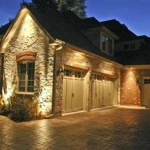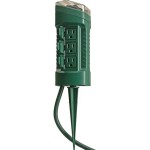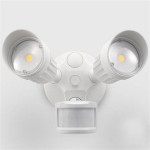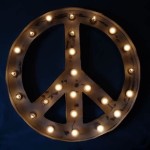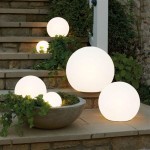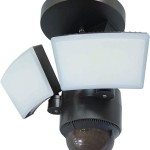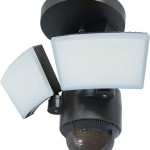Outdoor Lighting Foot Candles: Illuminating the Night
Outdoor lighting plays a crucial role in enhancing safety, security, and aesthetics in various environments, from residential pathways to commercial parking lots. A key metric for measuring outdoor lighting effectiveness is foot candles, a unit that quantifies the amount of light falling on a surface. Understanding foot candle recommendations and how they apply to different applications is essential for designing effective and efficient lighting systems.
A foot candle is defined as the illuminance on a one-square-foot surface from a uniform light source of one candela. In simpler terms, it measures how much light reaches a specific area. Higher foot candle readings indicate brighter illumination, while lower readings signify dimmer lighting. The appropriate foot candle level for a given area depends on several factors, including the intended use of the space, the presence of obstacles, and the desired level of security.
Various organizations, including the Illuminating Engineering Society (IES), provide recommended foot candle levels for different outdoor applications. These recommendations serve as guidelines for lighting designers and engineers to ensure adequate illumination for specific tasks and activities. Consulting these resources is crucial for achieving optimal lighting design and avoiding over- or under-lighting.
Residential applications typically require lower foot candle levels compared to commercial or industrial settings. For example, walkways and pathways may require 1-2 foot candles for safe navigation, while driveways and entrances may benefit from 2-5 foot candles for increased visibility. Landscape lighting, primarily used for aesthetic purposes, typically requires even lower levels, ranging from 0.5 to 2 foot candles, depending on the desired effect.
Commercial and industrial settings often demand higher foot candles to ensure safety and productivity. Parking lots, for instance, typically require 1-5 foot candles for general illumination, with higher levels recommended for areas with pedestrian traffic. Building perimeters and loading docks may require 5-10 foot candles or more for security purposes. Industrial areas, depending on the specific tasks performed, may necessitate even higher levels to ensure clear visibility and safe operation of machinery.
Sports lighting presents unique challenges, requiring carefully designed lighting systems to provide uniform illumination across the playing field. The required foot candle levels vary depending on the sport and the level of competition. For example, amateur sports fields may require 20-30 foot candles, while professional fields may need significantly higher levels, sometimes exceeding 100 foot candles, for television broadcasting and optimal player performance.
Achieving the desired foot candle levels involves careful consideration of several factors, including the type of light fixture, lamp wattage, mounting height, and spacing between fixtures. Light loss factor (LLF), which accounts for the depreciation of light output over time due to factors like dirt accumulation and lamp aging, also plays a crucial role in calculations. Accurate calculations and proper fixture selection are essential for achieving the target illumination levels and ensuring long-term lighting effectiveness.
Technological advancements have led to the development of energy-efficient lighting solutions, such as LED fixtures, which offer significant advantages over traditional lighting technologies. LEDs consume less energy, have longer lifespans, and provide better control over light distribution, contributing to reduced operating costs and improved lighting performance. When designing outdoor lighting systems, considering the efficacy and longevity of different lighting technologies is essential for optimizing energy efficiency and minimizing maintenance requirements.
Uniformity of illumination is another critical aspect of outdoor lighting design. Achieving uniform light distribution minimizes glare and shadows, enhancing visibility and safety. Proper fixture placement and aiming are crucial for ensuring consistent lighting levels across the target area. Light trespass, the unwanted spill of light onto adjacent properties, should also be minimized through careful design and shielding of light fixtures.
Color temperature, measured in Kelvin (K), also influences the perceived brightness and ambiance of outdoor spaces. Lower color temperatures (2700K-3000K) produce a warm, inviting light, while higher color temperatures (4000K-5000K) create a cooler, more vibrant atmosphere. Selecting the appropriate color temperature depends on the intended use of the space and the desired aesthetic effect.
In addition to meeting recommended foot candle levels, outdoor lighting design should also consider environmental factors and regulations. Dark sky compliant fixtures, designed to minimize light pollution, are increasingly important for preserving the night sky and protecting nocturnal ecosystems. Local ordinances and regulations may also dictate specific requirements for outdoor lighting, including curfew hours and maximum allowable light levels.
Effective outdoor lighting design requires a comprehensive understanding of foot candles, recommended illumination levels, and various factors that influence lighting performance. Consulting with qualified lighting professionals and adhering to industry best practices are crucial for creating safe, secure, and aesthetically pleasing outdoor environments.

Lighting Foot Candles What You Need To Know

Commercial Lighting 101 What Is A Foot Candle Fsg Electric

What Are Footcandles And How Many Do You Actually Need

Outdoor Lighting Regulations Land Use Services

Foot Candles And Other Lighting Terms You Never Knew Existed

Led Lighting What Is A Foot Candle How It Measured

Parking Lot Lighting Faq Lightmart Com

How Many Footcandles Do I Need 1000bulbs Blog

Lighting Comparison Led Sports Vs Flood
Guidelines For Good Exterior Lighting Plans
